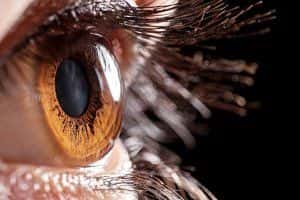This group of corneal disorders includes more than 20 variations. Each affects different parts of the cornea, causing it to get cloudy and compromising vision. Most of these dystrophies are inherited, affect both eyes equally and spread between layers of the cornea as they gradually progress.
Read more
The cornea is the clear, dome-shaped outer layer of your eye. It is comprised of five layers. Each is responsible for a separate function. This collection of cells, fluids and proteins must remain clear and undisturbed in order for you to see well, and to shield your eyes from dust and germs. The cornea protects your lens and iris, and is responsible for about 70 percent of the eye’s focusing power.
Unfortunately, the cornea is susceptible to a range of disorders, which are collectively referred to as corneal disorders. The following are some common corneal disorders that can affect this sensitive and important part of the eye.
Corneal disorders can be frightening, but researchers have developed many treatments. If you have any symptoms of corneal disorders, call us today so we can discuss your treatment options.
-
Corneal Dystrophies
Category: We Can Help With, Corneal Disorders, Disorders
-
Pterygium
Category: We Can Help With, Corneal Disorders, Disorders
Pterygium is characterized by a pink tissue growth on the sclera (the white part of the eye), which seems to be the result of chronic exposure to ultraviolet light. In fact, because many surfers suffer from pterygium, the condition is often called surfer’s eye. Pterygium is not cancerous and may continue
Read more -
Stevens-Johnson Syndrome
Category: We Can Help With, Corneal Disorders, Disorders
This skin disorder, also called erythema multiforme major, sometimes causes painful lesions on the eyelids. Stevens-Johnson syndrome can cause painful corneal blisters and even holes, leading to vision loss.
Read more -
Iridocorneal Endothelial Syndrome
Category: We Can Help With, Corneal Disorders, Disorders
This syndrome most commonly affects women between 30 and 50 years old. Symptoms include changes to the iris, corneal swelling and the onset of glaucoma.
Read more -
Strabismus Causes and Treatment
Category: We Can Help With, Adult Strabismus
In order for your eyes to focus normally, six muscles around each eye must work together. When your two eyes see different images, your brain tends to favor the stronger eye. This means the weak eye gets weaker, resulting in amblyopia, or “lazy eye.” Risk factors for developing strabismus may include
Read more -
Post-Concussive Vision Syndrome
Category: Visual Rehabilitation
More than 300,000 sports-related concussions occur each year, according to research. Many more concussions result from motor vehicle accidents, falls, and other non-sports related incidents. In addition to causing cognitive difficulties, concussions may result in a cluster of problems called post-concussive
Read more -
Special Needs
Category: Visual Rehabilitation
The cognitive differences of special needs children and adults are well-documented, but vision issues often receive less attention. People with special needs have the same range of vision issues as their neurotypical counterparts; however, these vision problems occur at a much higher rate in special
Read more -
Traumatic Injury
Category: Visual Rehabilitation
Accurate vision involves much more than good eye health. The brain integrates signals from the eyes with information from the motor, balance, and auditory systems to create an accurate view of the world. Following traumatic injury, one or more components of this complex system may be damaged. Receiving
Read more -
Balance Board
Category: Vision Therapy Programs
The brain and the eyes work together to create a visual experience. On one hand, the eyes send signals to the brain, which allows it to translate that data into visuals; on the other, the brain sends signals to the muscles attached to each eye, controlling their movements. If anything disrupts these
Read more -
Corrective Lenses
Category: Vision Therapy Programs
Corrective lenses are used to correct deviations, adjust focal points or neutralize other anomalies that impact the eyes’ ability to focus an image on the retina. To do this, the lenses must be the correct type and of the right power. Strength – which is expressed as diopeters – relies on the material
Read more -
Training Devices
Category: Vision Therapy Programs
Visual-motor-sensory integration training uses various devices to appeal to a person’s senses, including touch, sound and smell. This type of therapy is particularly useful in children with autism. Devices may include play dough, rubber toys, weighted bells and blankets, water, rice, sand, beans, musical
Read more -
Cawthorne-Cooksey Exercises
Category: Vision Therapy Programs
These exercises are mainly used at home and range from simple head and eye movements to performing more complex activities like throwing a ball or focusing on a stationary object while the head is moving. While moving one’s head and tossing a ball sounds easy enough, they are not simple tasks for persons
Read more -
Keep Your Eye on the Ball: How Vision Therapists Use Marsden Balls to Help Their Patients
Category: Vision Therapy Programs
A Marsden ball might not look very impressive, but this little ball offers big benefits for athletes and children affected by strabismus, ambylopia and other conditions. Marsden ball exercises are just one of the techniques that vision therapists use to help patients make better use of their vision. What
Read more -
Electronic Targets
Category: Vision Therapy Programs
Automated targets with timing mechanisms not only show the optometrist how the eyes move in the beginning of treatment – when eye problems have yet to be fully addressed – by strategically positioning the targets, but they give weak eyes a necessary workout. By moving the eyes around to focus on
Read more -
Therapeutic Lenses
Category: Vision Therapy Programs
Contact lenses, or therapeutic lenses, are thin lenses that are placed on the surface of the eye. While some wear them for cosmetic reasons, their primary function is to correct and improve vision problems related to refractive errors, act as a protective layer in patients with eye injuries, reduce discomfort
Read more -
Filters
Category: Vision Therapy Programs
Optical filters carefully transfer light in a specific range of wavelengths or colors while obstructing what remains. These dyed plastic or glass devices are placed in the optical path. They are described by their frequency response, and this identifies how the scale and stage of each frequency component
Read more
